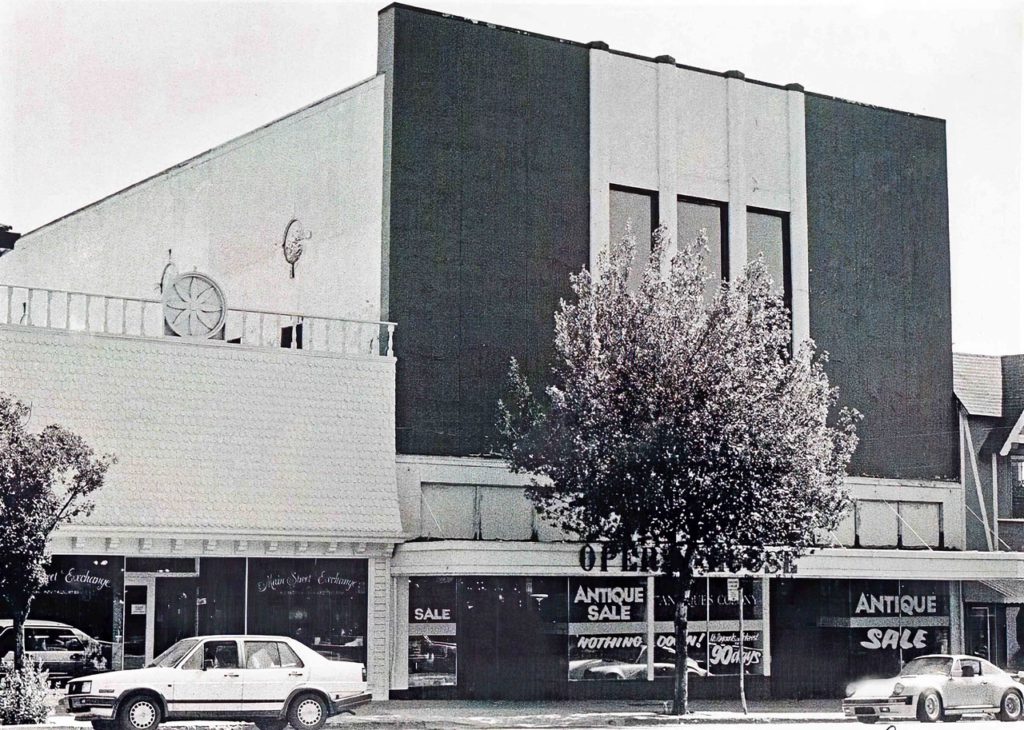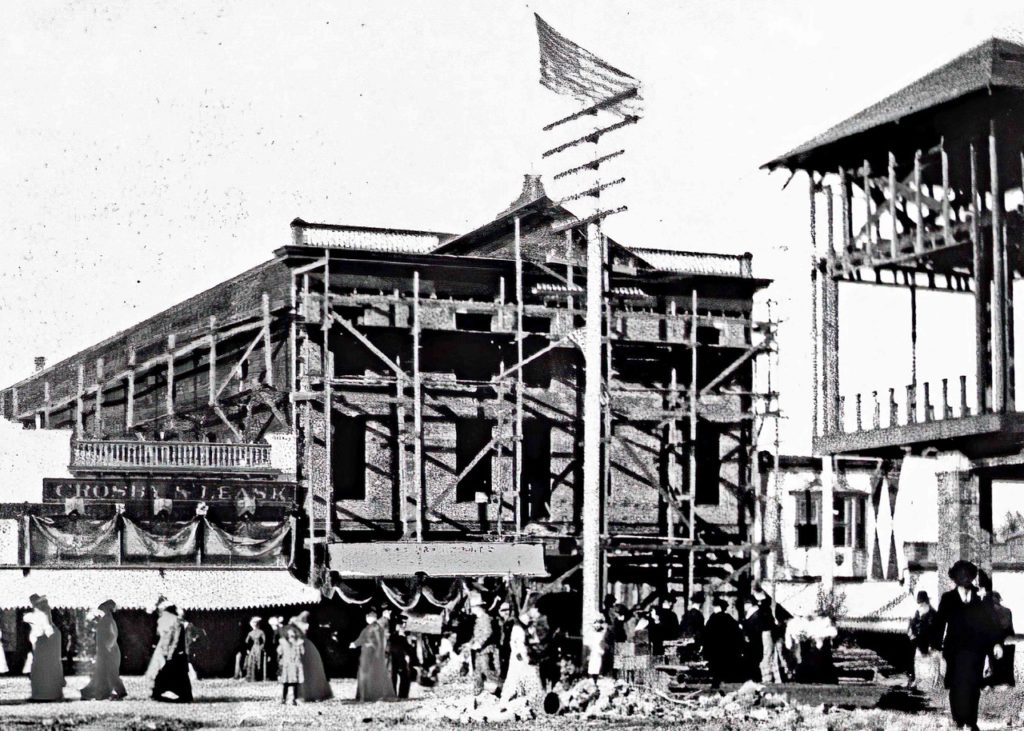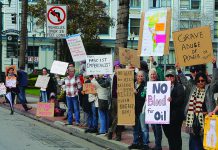
Like many small towns in the west, Los Gatos prospered in the late 19th century after the arrival of the railroad. Eager to shed their town’s rustic image, civic-minded citizens and businesspeople sought every opportunity to establish a more cosmopolitan reputation.
A performing arts center was one measure of a town’s sophistication. But since a theater was considered low class and crude at the time, the term “Opera House” was chosen as a more dignified name for such a venue, even if an actual opera would never be performed there. Between 1850 and 1920, no respectable town or city in America was without at least one opera house.
The first opera house in Los Gatos was built on East Main Street by blacksmith George Seanor in 1885. It stood for five years before it burned to the ground. The fire was thought to have originated from a lighted cigar stub thrown away at a political rally. Early settler Peter Johnson built the second opera house, also on East Main. It was said to be the “Pride of Los Gatos.” However, financial problems plagued the investors and it operated for only five months before it burned down in 1894.

(Los Gatos Library and Museum History Project)
The fate of the first two opera houses didn’t seem to deter newly arrived residents Eugene and Nellie Ford from building a third one. The couple had relocated to Los Gatos from Tennessee in 1886 and settled at 60 University Ave. in 1897. Eugene was the station agent for the Southern Pacific Railroad and Nellie was an accomplished pianist. When a development site became available on West Main Street after a fire, they wisely chose brick and stone construction materials.
Ford’s Opera House opened on the evening of Oct. 10, 1904, to the delight of the town. It featured a 500-seat auditorium on the second floor, complete with a grand piano and stamped tin panels on the ceiling. Several retail shops occupied the ground floor. During the following 12 years, the audience witnessed minstrel shows and vaudeville troops of barnstorming thespians. Noontime parades advertised evening performances. The venue was popular for picture shows, town meetings, lectures, school plays, graduations and rallies.

(Los Gatos Library and Museum History Project)
The project was a great success and Eugene became quite a prominent citizen until a rumor began to circulate that he had an affair with one of the actresses. The San Jose Evening News ran a story explaining that Los Gatos was “all agog” over the mystery of a baby left on a doorstep by a strange man who had arrived on the train looking for Eugene L. Ford. The “bouncing baby, fat and good looking” was subsequently turned over to the authorities for adoption.
In 1916, J. Walter Crider purchased and remodeled the Opera House into Crider’s Department Store. The store closed in 1957, a few years after Crider’s death. An unattractive modernization covered the façade with cheap-looking rectangular panels which remained until the 1989 earthquake required extensive repairs to the building. The front was then refinished in red brick. The open space on the second floor was a popular event venue until 2013, when it was subdivided into offices. All that remains of the original opera house interior is the elegant curved stairway.
Alan Feinberg is a local historian and founder of the LOST Gatos Project. His mission is to generate enthusiasm among Los Gatos residents for remembering and preserving our town’s unique character and historic treasures before they’re lost forever. For more Los Gatos history, download the free mobile app Discover LOST Gatos and take a self-guided walking tour through our historic downtown.










Thank you for keeping history alive. Well researched information.
Dinah Cotton